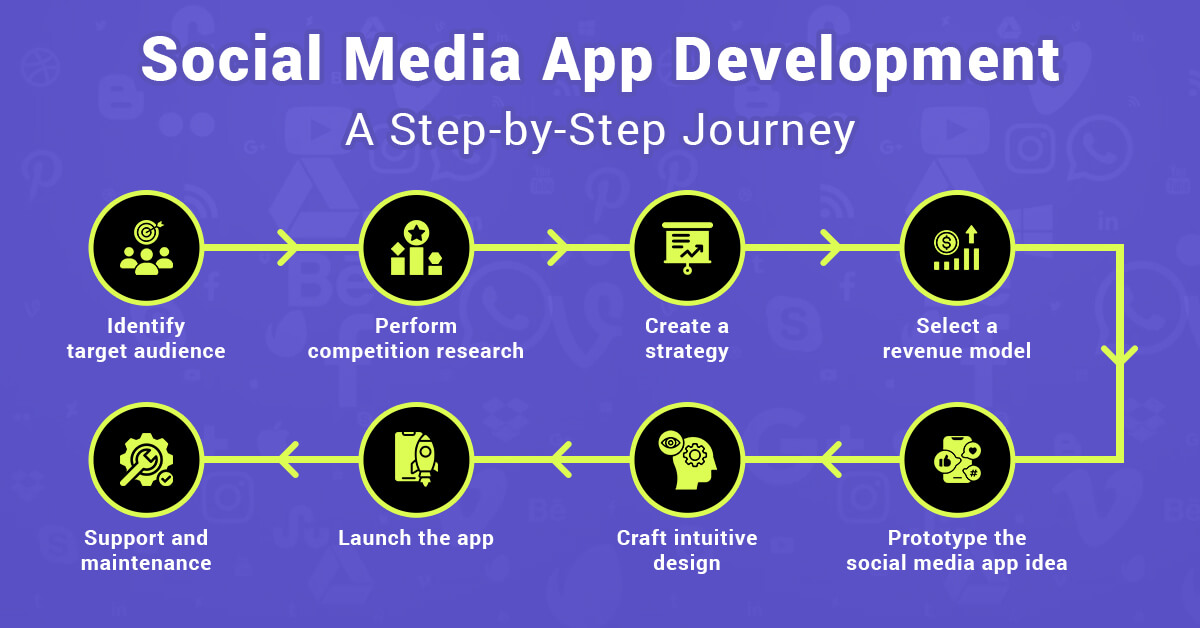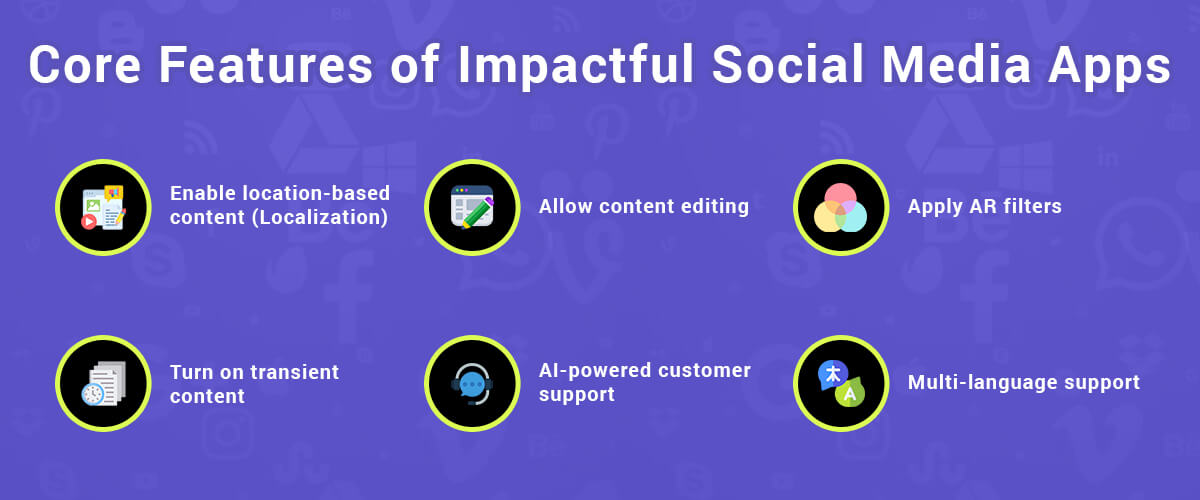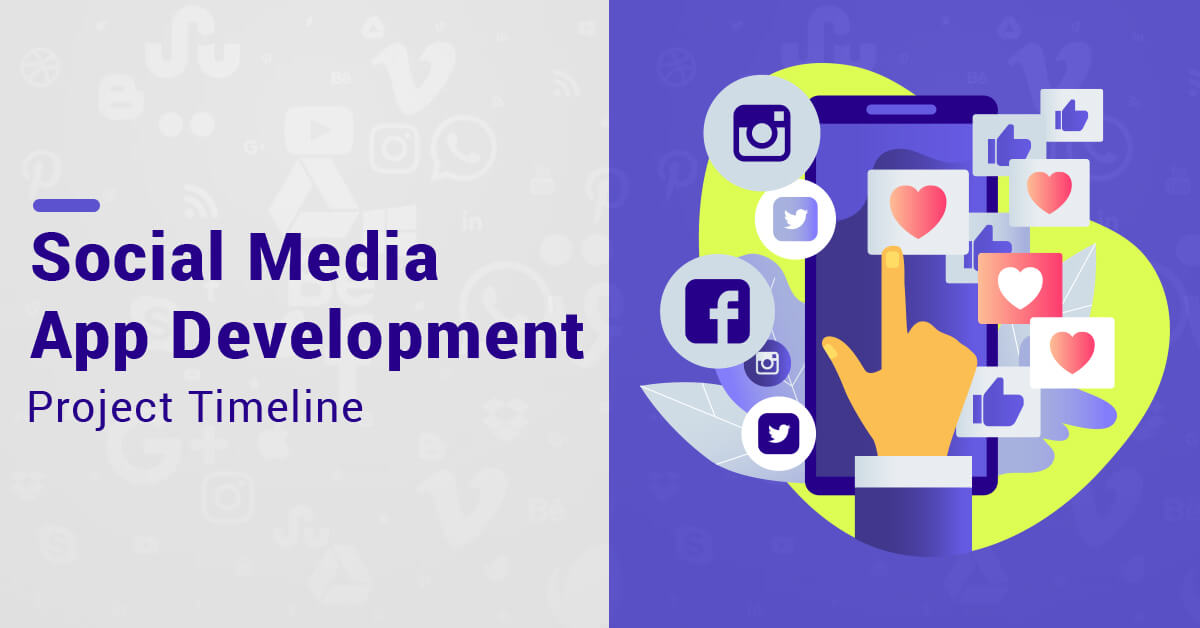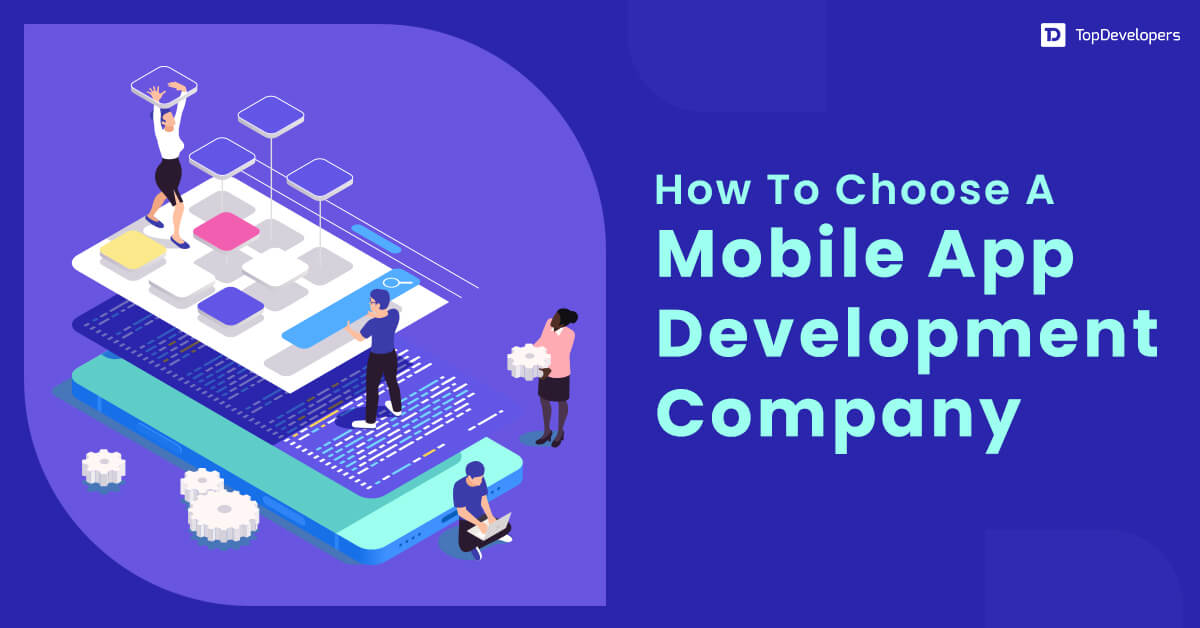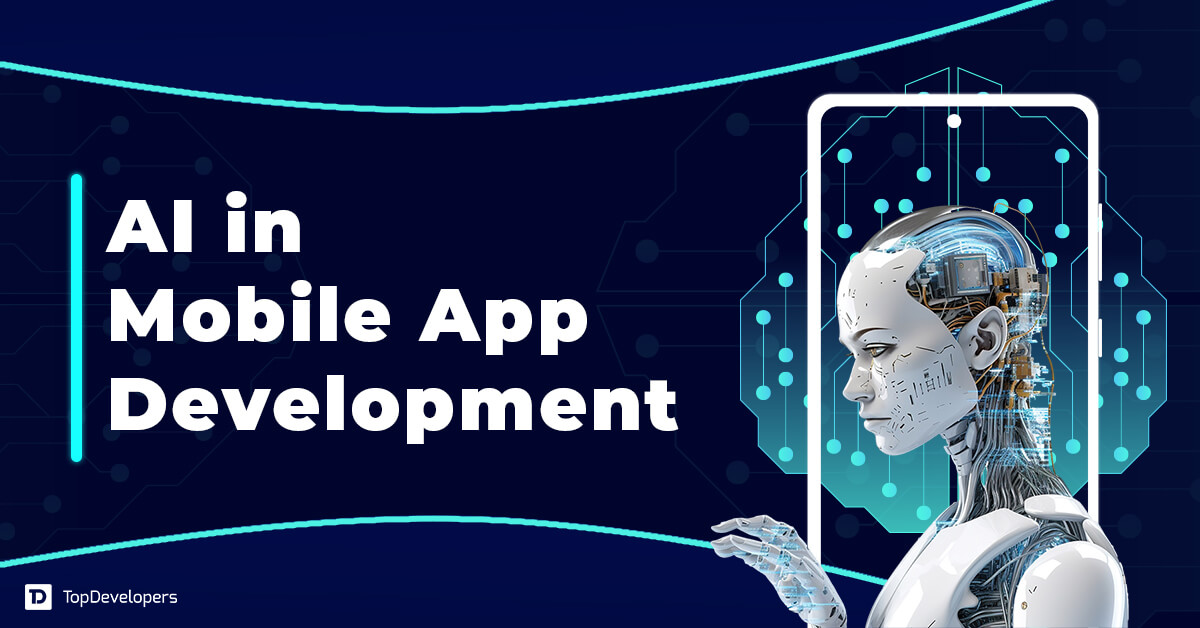
There are 5.35 billion internet users worldwide, and of this total world’s internet population, 5.04 billion are social media users. Facebook has roughly 3 billion active users, Instagram has 1.4 billion users, LinkedIn has 171.9 million users, and Pinterest has 597 million users, which are expected to surge in the years to come.
The impressive figure indicates that social media has become part and parcel of a large share of the world’s population.
What stands behind this success?
People love being social and sharing thoughts, photos, videos, and other content with their like-minded surroundings. It also signals social media app development is a promising market with a myriad of opportunities for enthusiasts.
As an entrepreneur, are you looking to replicate success with a one-of-a-kind social media application development? If so, there are a lot of questions whirling in your mind, such as – which type of social media app to develop, how to build a social media app, the mix of basic and advanced features to keep, monetization strategies, social media app development cost estimation, and much more.
All such information provided in the guide will help entrepreneurs build excellent social media apps. Let’s walk through them.
Table of Contents
- What is Social Media Application?
- Types of Social Media Apps
- How to Create a Social Media App: 8 Steps
- Basic features that Social Media Apps should have
- Advanced Features that help Social Media Apps seize an edge
- What do Start-ups get in return with Social Media App Development?
- What is the social media app development project timeline?
- How Much Does it Cost to Build a Social Media App Like Facebook, Instagram, and TikTok?
- Team Structure Required for Social Media App Development
- Best Tech Stack for Social Media App Development
- Monetization Models to Make Huge ROI
- How to Develop a Social Media App? The Hiring Options you have
- Popular Social Media Apps
- Begin developing your social media app
- FAQs on Social Media App Development
- What makes a social media platform successful?
- What questions can I ask the social media app development company?
- What is the cost of social media app development?
- How can I make money with social media apps?
- Where do I start Building a social media application?
- How long does it take to make a social media app?
What is Social Media Application?
Facebook, Twitter, Instagram, and LinkedIn are popular social media applications that dominate the social media landscape with millions of active userbases and unique concepts. Facebook and Instagram are well-known for story sharing and live streaming, LinkedIn facilitates professional networking, and TikTok improves engagement with short-form videos and others.
The existing social media channels and new platforms are assimilating emerging technologies and trends to improve the platforms and enhance user experiences. For example, AR filter integration by Instagram and Snapchat thrives users on image personalization and sharing. The audio feature is enabled by many social platforms, ensuring real-time engagement with voice-based communication.
E-commerce convergence with Pinterest allows users to purchase items from other users directly through posts or stories shared. Instagram has turned into a virtual mall where users can discover products and buy directly using the app.
Types of Social Media Apps
Before starting with social media app development, it is essential to know the category your social media app idea belongs to. This helps identify the target audience, their needs, and the competition. The list of social media apps enables businesses type of social apps they can develop, which is the right fit for their business purpose. The different social media app types are-
- News & social networking
- Blogging apps
- Instant messaging apps
- Lifestyle social media apps
- Entertainment social platforms
- Discussion forums
- Content sharing networks
- Private community platforms
How to Create a Social Media App: 8 Steps
The idea to launch a social media app, process requires careful execution of different phases. The steps to follow for user-friendly social media app development are as follows:
Identify target audience
You have to identify your target audience and understand what they expect from the social media app. Conduct research and find out what are the needs of your target users and which features can help solve those needs more effectively compared to your competitors.
One-to-one interviews or surveys help in knowing the users’ expectations and preferences for social browsing and usage. It helps you build an app that your target audience is looking for rather than building it based on assumptions. This phase lets you understand the target audience’s pain point and how you can provide the solution to it.
Perform competition research
Target audience research is not enough to gain success and a competitive advantage in the market with social media app. Studying the competition, strategies they are using, and the gaps in the market helps in building a unique social networking application that fills the void that users feel and helps you leapfrogs the competition. Don’t just make another social media app; instead, build a one-of-a-kind app that brings your start-up to a better position.
Create a strategy
After researching the target audience, competition, and gaps that can make the social media app thrive, it’s time to analyze the requirements and channel them into an action plan. The strategy serves as a base for the social media app development that defines the process in which the app gets built.
Select a revenue model
Before starting the development of a social media app it is necessary to select a revenue model that’s well-received by the audience and keeps the business profitable. The popular monetization models that are leveraged worldwide.
- The freemium model enables users to sign up and browse the app for free, but accessing premium content requires users to pay fees.
- The advertising model adopted by social media businesses to earn revenue after their user base has grown to millions in number, then posting relevant ads is helpful.
- The premium model enables users to access all the app features after buying it.
- The subscription model is used for monthly or yearly payment for specific features.
Prototype the social media app idea
Turning the app idea into a workflow where the rough sketch represents how the app functions. Sketching helps in understanding the logic, number of screens, and interactions between them. Wireframe creation enables visualizing the skeletal view of the application and the experience it renders to the users. Finally, the prototype is a high-fidelity mock-up that provides a good understanding of the future social media app to the developers, which lets them easily build it into a full-fledged solution.
Craft intuitive design
UX research helps in creating the social media app’s UI design that matches users’ expectations. The value-added functionalities, visually appealing designs, and organized layout keep the users visiting the app and retain the subscribers. Watch the latest trends in social media marketing and build minimal designs following the design principles and guidelines provided by app stores.
Launch the app
When the social media app is ready, get it tested rigorously to ensure it performs as expected, and then finally it’s submitted to the app store following the submission guidelines. The app description, images, and video tutorials get the social media app ready to organically market on the app store.
Support and maintenance
The job doesn’t end with your social media app launch. Instead, the real work starts here. After the app release, the app needs to be upgraded with the addition of new features, UI redesign, and fixing the issues according to user feedback.
Basic features that Social Media Apps should have
Even though social media apps differ, they all have essential features that should be present in your app to form an MVP (Minimum Viable Product). Social media apps should have many basic features: Let’s take a look at the
Signup
Offer multiple options to the users to register for social media apps such as email ID, and phone number followed by the password for user-friendly onboarding. OTP or SMS verification is added for validation and 2-factor authentication purposes for security.
User Profile
A user profile is an important element for social network apps since it usually contains all user information (birth date, country of residence, recent posts, profile photo, etc.) All this not only helps to identify a person that a user is already acquainted with but also finds new like-minded friends, which is actually the main goal of most social networks. So, users of your social networking application will surely want to get one and edit it.
Search
Any social network is a massive amount of data: publications, communities, hashtags, people, places, etc. Convenient navigation through that data is barely impossible without a proper search bar. In addition, it is a good idea to add some filters to simplify the search.
Engagement
Social media apps can better engage users by allowing them to like, share, and comment on posts shared by other users. Also, the users can connect and communicate with other users who have shared the post through chat or direct messaging as done on Facebook.
Live-streaming
In the digital age, as people increasingly prefer to watch live streams and videos, enabling them with a live streaming option on your app is sure to have a positive vibe from users for your social media app. Businesses can use this option to connect with their target audience at scale during product launch and show demo as well.
Newsfeed
It is the place where updates from friends and communities are shown. Newsfeed is an integral attribute of many giant social networks like Facebook, Twitter (X), Instagram, and so on.
Since many users are dissatisfied with how the newsfeed works on the previously mentioned platforms, a well-thought-out feed policy may become your competitive advantage.
Instant Messaging
It is difficult to imagine a modern social media application without built-in chats. Add an opportunity for sending messages, images, videos, and documents in order to keep pace with your competitors.
Push Notifications
Push notifications are the ultimate way to notify users about something that is important to them. Friend requests, new messages, upcoming events, etc. But remember that too many notifications are a bad experience. Make sure the app has a notification setting where users can pick what they want to be notified about, and how often they shall receive the notification.
Upload post
Social media apps such as Facebook or Instagram allow users to create a post with text, audio, images, and video to make them appealing. The users can simply add multimedia content from the gallery or capture it in real-time to add appealing posts on social networks.
Group and subgroup
Allow users to create a network or community by creating a group wherein users are divided based on specific interests or topics. The groups are further divided into subgroups depending on subtopics that encourage focused discussions and enable content sharing. Improved involvement of the users increases user interactions. Also, users can post about an event or sell event tickets in groups to let the community users know about the events.
Analytics
Enabling data analytics capabilities into social media applications provides rich insights into user preferences, behavior, and interactions according to different locations. The meaningful data turn on personalized experiences such as suggestions for customized content, recommendations for relevant news or stories, and others that intrigue the users on social channels.
Other Basic features to include in social media app:
- Like and share options
- Private and group chat
- Video and voice calls
- Secure Login
- Messaging system
- Open forum
- Real-time notifications
Advanced Features that help Social Media Apps seize an edge
In addition to the best mobile app features set, the social media giants incorporate advanced features powered by emerging technologies to improve user engagement and deliver the best user experience. The features that you can look for;
Enable location-based content (Localization)
Tailor the content shown to the users based on the location so that users can view the content of the users of the same location. Google Places helps implement the location-based content feature. When users tag their location in the post, they get to know other friends in nearby locations with whom they can socialize.
Allow content editing
Users like to customize the post with necessary editing, followed by the options to crop or rotate images and videos. Enable post editing right in the social media app that removes the back-and-forth to and from different media apps.
Apply AR filters
AR filters are a nice addition that differentiates the app from similar type of apps. Augmented Reality filters provide several filters and add effects to the videos or audio to engineer unique experiences. It is best implemented by Snapchat and Instagram apps, which have become a new norm nowadays.
Turn on transient content
Ephemeral content disappears after 24 hours of the message being sent or the story being created. Instagram and Snapchat have incorporated them well, where stories disappear when this feature is turned on. Similarly, WhatsApp integrated feature that makes messages disappear after specific time interval.
AI-powered customer support
AI-based automated chatbots that smartly answer the users’ questions by connecting the dots and analysis. These are useful when social channels use these bots for product/service promotion for businesses. Remember, Facebook chatbots are leveraged by Facebook businesses to communicate with target audiences and serve them better with instant replies.
Multi-language support
For reaching out to a global audience, it’s essential to allow users to interact in their native language to foster interactions. For example, Twitter facilitates users to select one of the 49 languages to gain major traction of users.
What do Start-ups get in return with Social Media App Development?
The application of social media provides a wide spectrum of benefits to businesses, be it start-ups or enterprises, that convince them to invest in social media app development. Here are a few reasons to jump on the social app development bandwagon-
Access to a large userbase
Most of the billions of users accessing the internet are using social media platforms to socialize with their friends and family members. Creating a unique social media app helps start-ups attract users looking for socialization extraordinarily. TikTok is the best example of a social channel that revolutionized content consumption with short videos that are well-received by a global audience. Such social app development helps start-ups acquire a large share of social users.
Improved brand awareness
Amidst several social channels allowing users to connect and communicate, start-ups can stand out with unique social media app that narrates a one-of-a-kind story about the brand. Improved brand visibility and awareness are the by-products of social media app development.
Enhance engagement
Social media facilitates direct communication of people with different people and businesses, encourages interactions, and leads to better engagement. Real-time communication results in strengthened networking within the brand community, which is the result of user engagement.
Reveal things hidden-in-plain-sight
Integrated reporting and analytics features in social media apps allow start-ups to gain insights into users’ preferences, interests, and behavior when users interact with social media platforms. These insights help build and improve user-friendly products that are difficult to find.
Get more revenue opportunities
Social channels that appear as platforms to connect users sitting across two corners of the world allow start-ups to earn revenue strategically. With advertising, subscriptions, in-app purchases, video marketing, and other monetization models, start-ups can earn a good amount of money.
Gain competitive advantage
Reinventing user experiences with a dose of personalization and unique functionalities allows start-ups to seize an extra edge in the competitive market.
What is the social media app development project timeline?
Disregarding the app development approach (Cross-platform or native development) you choose for your social media app development, pre-determining the time to launch is essential. Strategic planning is needed for the social media app development timeline, wherein the development company defines the time estimation for each functionality, design, and architecture development accordingly.
The well-planned project timeline ensures a timely launch and drives the massive attention of the user base, which improves the chances of the app’s success. Here’s the breakdown of the project timeline for a simple social media app with basic features and fair design.
| Basic features (MVP) | 200 – 300 hours |
| Admin panel | 140 – 200 hours |
| Quality assurance | 100 – 150 hours |
| Frameworks and libraries (tech stack) | 10 – 20 hours |
| Project management | 100 – 150 hours |
When we dig deeper into the time that different functionalities take, the breakdown looks like this:
| Functionality | Development time |
|---|---|
| Registration | 50 – 60 hours |
| User Profile | 60 – 70 hours |
| Newsfeed | 60 – 70 hours |
| Search bar | 40 – 50 hours |
| Chat | 90 – 100 hours |
| Instant messaging | 50- 60 hours |
| Push notifications | 20 – 30 hours |
| Add post | 10 – 29 hours |
| Filters | 10 – 15 hours |
| Group/subgroup | 20-30 hours |
| Location-based content | 10 – 15 hours |
| Analytics integration | 10 – 20 hours |
| Editing | Depends |
| UI/UX design | Depends |
When start-ups are looking to build advanced social media applications or enhance existing social apps with new features, the time surges accordingly.
How Much Does it Cost to Build a Social Media App Like Facebook, Instagram, and TikTok?
The social media app development cost is estimated considering factors such as app features, design, number of platforms, development approach, tech stack, and mobile app development company’s location.
Typically, the cost to create a social media app ranges between $20,000 and $80,000, and it ramps up as the aforementioned factors change. For example-
- Social media app development cost with basic features = $20,000
- Advanced features addition = $20,000 + $10,000 = $30,000
- Design enhancement = $30,000 + $5,000 = $35,000
The app development for different platforms and using different approaches vary the development cost widely, such as:
- For Android platform = $28,000
- For the iOS platform = $25,000 due to less device fragmentation.
With native development approach = it costs around $55,000 (Android and iOS) - Cross-platform development approach = The cost is reduced to $30,000.
When social media app is developed in different regions of the world, it costs differently to the businesses, say-
- Australian app developers take up $55,000
- North American app developers demand $70,000
- Central European app developers ask for $60,000
- Indian app developers quote $40,000
As an entrepreneur, the guide helps you understand the app development cost in detail so that you can compute the social media app development cost on your own.
Team Structure Required for Social Media App Development
Social media applications are the result of the collaborative efforts of a complete team, including developers, designers, testers, project managers, and others. When looking to build a social media application, ensure the development company facilitates a team of professionals who are-
- Android/iOS/Cross-platform developer
- UI/UX designer
- QA & testing specialist
- Project manager
- Marketing expert
Best Tech Stack for Social Media App Development
In addition to having the right team, the right tech stack selection is imperative for a social media app’s success. Considering the audience features to build, and design uniqueness, the tech stack is decided differently for Android and iOS platforms.
| Components | For Android platform | For iOS platform |
|---|---|---|
| Programming language | Kotlin, Java | Swift, Objective-C |
| Notifications | Google Cloud Messaging | Apple Push Notifications |
| Database management | MongoDB, SQL, MySQL | Core Data, SQLite |
| SDK | Android SDK | Cocoa Touch |
| Geolocation | Google Map API | MapKit |
| Analytics | Azure Stream Analytics, MixPanel | Firebase, Mixpanel, Flurry |
| AR filters | ML Kit | ARCore |
| Storage | Amazon S3, Azure Server | iCloud, Amazon S3, Google Cloud Storage |
Here are some programming languages that can be used for social media app development:
- Node.js
- PHP
- Python
- Scala
- GraphQL
- Redis
Here are some other technologies that can be used for social media app development:
MVVM architecture
Google Play Services framework
Twilio, Nexmo, Push.io, FCM
Braintree & PayPal, E-wallets, Stripes
Monetization Models to Make Huge ROI
Every entrepreneur looking to build social media applications needs a roadmap to monetize and turn profits from the value it delivers. There are plenty of monetization models that can be implemented to earn revenue with the least effort. Let’s have a look at the top ones;
Freemium model
The most popular monetization model allows users to register and access basic features for free. To access advanced features, users need to pay a subscription or a one-time fee to unlock the feature. LinkedIn is the best example that enables professionals to register and use the platform for free. However, to turn on the intelligent job-matching features, a paid subscription is necessary.
Direct Sales
After the social media app has earned a massive user base and scores high popularity, selling relevant products/services to the target audience is possible. When the social channel is able to create visual appeal and publish intriguing content regularly, the direct sales model works.
Video Marketing
Short-video marketing is a powerful marketing weapon that’s warmly embraced by worldwide businesses. The short videos are easy to consume, which increases the number of views and user engagement, which businesses are using to appeal to the audience. Allowing businesses to do affiliate marketing or influencer promotion helps them increase views, which, in turn, drives revenue to social app owners.
Lead Generation
When social media apps analyze user activities and browsing patterns to create a list of potential buyers or paying customers, this organized data aligned with industry-specific needs helps businesses gain potential leads and readily pay for the same. For example, retail businesses pay social channels to provide a list of potential leads interested in shopping for products.
Sponsors and Partnerships
This monetization model allows businesses to improve brand exposure through social platforms that are known within niche markets, which aligns with business needs. It’s different from the in-app advertising model, where the app doesn’t need to integrate with an ad network. Displaying static ads of brand partners is involved.
Events and Promotions
The social media applications that have built an optimal user base with a good number of active users become a marketing tool for leading brands. Brands look for such social platforms where they can promote the products/services that improve visibility and probably sales. Also, posting about recent events and enabling ticket booking allows brands to reach out to a larger user base, which lets them pay social app owners for promotions and events.
Data Monetization
Businesses launching products or services in the market often look for users’ preferences or feedback for the same. When social media apps sell this relevant data to third parties, it is then utilized to enhance or market the products. For example, the check-in feature within social media applications collects enormous amounts of data about local hotspots, and restaurant chains purchase this data to find the location for opening their next outlet.
Premium features
Various social media networking websites such as LinkedIn or YouTube facilitate premium subscriptions that enable users to unlock additional features. For instance, YouTubers gain access to download content after subscribing to the services.
In-app purchase
Social media apps monetize with in-app purchases by adding paid content to the platform that users can buy if they are interested in the app. For example, Facebook has created a sticker store from where users can buy a pack of stickers that they can use while chatting using Facebook Messenger.
Advertisement
Now, you know how to make a social media app like Instagram, here’s another way to make revenue the way Instagram makes, that’s putting advertisements. Social media platforms earn revenue by allowing businesses to put ads on the platform. Instagram did it fairly by displaying relevant posts and stories in the users’ newsfeeds.
How to Develop a Social Media App? The Hiring Options you have
Turning the social media app idea into a full-fledged solution follows a couple of ways to pave the road to success. Consider one of the options for social media app development.
Freelancers
Opting for freelance developers helps businesses build social media apps at the lowest rates. However, this alternative comes with the hassle of project management, searching for freelancers, and project-related discussions with every freelancer individually. In addition to hard work, there’s a risk involved with timely deliveries and flawed solutions.
App builders
Without having any technical knowledge and spending a penny on social media app development, businesses can develop social networking applications using app builders for free. The app builders facilitate templates, themes, and other components required for basic social application development that businesses can select and keep with simple drag-and-drop features. However, the number of functionalities is limited, and the chances of scaling the app are less.
Partner with an app development company
Hiring a social media app development company is an optimal solution to get a social platform built by a team of professionals at reasonable rates. Also, well-tested strategies, well-defined processes, and project management ensure that the app is developed as expected, with unlimited customization, scalability, and modification possibilities. Outsourcing projects to IT companies guarantees timely development with no scope creep and budget overruns.
Build in-house team
Businesses can opt to build an in-house team for building social applications that give complete control over the app development, but it’s pricey. Businesses need to invest a lot of time to hire and employ developers, designers, testers, and project managers. Investing in infrastructure, paying wages even when there’s no work, and other bills are add-on, which makes it expensive.
Popular Social Media Apps
The social media market is packed with a sea of social media applications under different categories. However, some of them are dominating the social media space with a large number of users.
- Snapchat
- TikTok
- Tumblr
- YouTube
- Twitter (X)
Begin developing your social media app
Many start-ups are rocking the social media world when they have decided to shape the app idea into a reality. TikTok is the best example that responded Yes to turn their unique idea into full-fledged development in the crowded social space. Today, making millions with more than 1 billion users worldwide.
If you are the one who bounced with an idea of making a social media app and planning to develop the one that leads the pack. This guide covers everything that you need to know regarding social media app development, from how to build a social media app to features, benefits, revenue model, and development cost.
You cannot bring wild success by simply joining the fray. Appealing to the audience from the first day of launch to ensuring a high level of engagement followed by huge ROI generation requires following a plan in an organized way. That’s where collaborating with a remote social media app development company helps get things right. Search and partner today!
FAQs on Social Media App Development
What makes a social media platform successful?
Social media applications that succeed in engaging target audiences with unique concepts and content become successful in the long run. It requires building an app wearing users’ lenses, catering to the needs of users of specific niches, analyzing competition, and aligning with trends.
What questions can I ask the social media app development company?
Businesses can ask a couple of questions to the social media app development company for better collaboration:-
- How will you help us highlight the app’s USP?
- How will you manage the project and get it completed within the timeline?
- How can I assess the technical expertise of your team required for the project?
- How the team will help in maximizing user experiences?
What is the cost of social media app development?
The social media app development cost ranges between $10,000 to $80,000. The cost widely varies according to the number of features, design complexity, outsourcing location, number of platforms, and more.
How can I make money with social media apps?
There are different revenue strategies that social media app owners can use to make a good amount of money with the application. It includes premium app downloads, in-app purchases, subscriptions, sponsorship, video marketing, data selling, lead generation, and others that businesses can leverage according to their social media app type and size.
Where do I start Building a social media application?
Start building a social media application by launching an MVP version to test the idea and see if the users like it, and then gradually enhance it with more functionality.
How long does it take to make a social media app?
Social media app development takes 3-9 months, depending on the development approach (Native or cross-platform), functionalities, design, tech stack, and others.
 Avantika Shergil
| Feb 26, 2024
Avantika Shergil
| Feb 26, 2024
Avantika Shergil is a technology enthusiast and thought leader with deep expertise in software development and web technologies. With over 8 years of experience analyzing and evaluating cutting-edge digital solutions, Avantika has a knack for demystifying complex tech trends. Her insights into modern programming frameworks, system architecture, and web innovation have empowered businesses to make informed decisions in the ever-evolving tech landscape. Avantika is passionate about bridging the gap between technology and business strategy, helping businesses build customized software and website, and understand about different tools to leverage effectively for their ventures. Explore her work for a unique perspective on the future of digital innovation.
